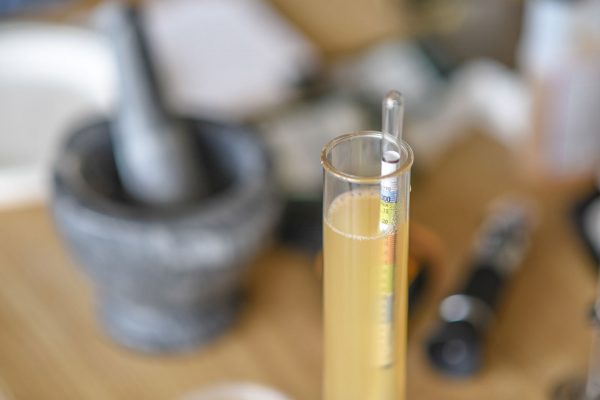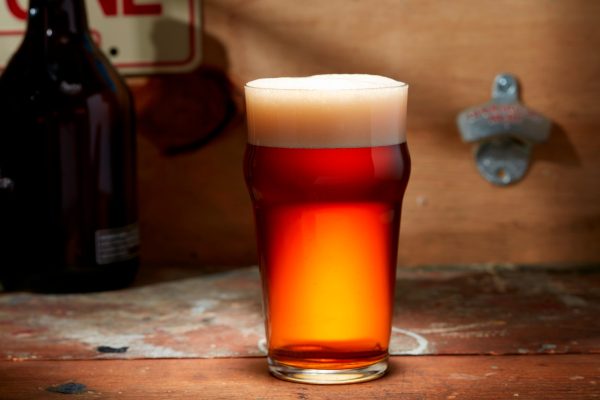
The following beer recipe is featured in the January/February2002 issue of Zymurgy magazine. Access this issue along with the archives with Zymurgy Online!
Charlie Papazian presents Puna Coast Black Lager, named after the black coast of Hawaii, in the article "Drinkably Dark: Exploring Black Lager" featured on page 51 of the Janurary/February 2002 edition of Zymurgy magazine.
The concept of this recipe, and Charlie's article as a whole, is that all dark beers cannot be simplified as heavy and strong. This German-style schwarzbier is an example of a dark beer that is very similar to its sessionable, lighter-colored cousins. In fact, if blindfolded, the color of many well crafted schwarzbiers is often a surprise based on the preconceived notions of what a dark ale "should taste and smell like." Just like it is taught on the first day of kindergarten, you can't always judge a book by its cover.
The following beer recipe is featured in the January/February2002 issue of Zymurgy magazine. Access this issue along with the archives with Zymurgy Online!
Charlie Papazian presents Puna Coast Black Lager, named after the black coast of Hawaii, in the article "Drinkably Dark: Exploring Black Lager" featured on page 51 of the Janurary/February 2002 edition of Zymurgy magazine.
The concept of this recipe, and Charlie's article as a whole, is that all dark beers cannot be simplified as heavy and strong. This German-style schwarzbier is an example of a dark beer that is very similar to its sessionable, lighter-colored cousins. In fact, if blindfolded, the color of many well crafted schwarzbiers is often a surprise based on the preconceived notions of what a dark ale "should taste and smell like." Just like it is taught on the first day of kindergarten, you can't always judge a book by its cover.
Ingredients:
- 8.5 lb (3.6 kg) Pilsener pale malt
- 4 oz (112 g) Belgian aromatic malt
- 6 oz (170 g) German Caraffe or Belgian debittered black malt
- 1.3 oz (37 g) German Hallertauer (or equivalent of Crystal, Mt. Hood, Santiam, Tettnanger or Saaz) (6 HBU/172 MBU) whole hops at 60
- minutes
- 1 oz (28 g) hops (same as above) (4 HBU/112MBU) whole hops or pellets @ 10 minutes
- 0.25 tsp powdered Irish moss
- 0.75 cup (180 mL) corn sugar (priming bottles) or .33 cups (80 mL) corn sugar (kegging)
- Quality lager yeast for German style lagers
Specifications:
Yield: 5.5 gallons (21 L)
Original Gravity: 1.048 (12° P)
Final Gravity: 1.012 (3° P)
ABV: 4.80%
IBU: 22
SRM: 28 (56 EBC)
Boil Time: 60 minutes
Directions:
- A step infusion mash is employed to mash the grains.
- Add 9 quarts (8.5 L) of 143°F (61.5°C) water to the crushed grain, stir, stabilize and hold temperature at 132°F (53°C) for 30 minutes.
- Add 4.5 quarts (4.5 L) of boiling water and add heat to bring temperature up to 157°F (69.5°C) and hold for about 30 minutes.
- Then raise the temperature to 167F° (75°C), lauter and sparge with 4 gallons (15 L) of 170°F (77°C) water.
- Collect about 6 gallons (23 L) of runoff and add 60 minute hops and bring to a full vigorous boil.
- The total boil time will be 60 minutes or long enough to end up with 5.5 gallons (21 L) of wort.
- When 10 minutes remain add remaining one ounce hops and Irish moss.
- After a total wort boil of at least 60 minutes (5.5 gallons should remain) turn off heat and cool all of the wort. Use an immersion cold-water bath or heat exchanging coils.
- Then strain and rack to a sanitized fermenter.
- Pitch a good dose of healthy, active lager yeast and primary ferment at temperatures at about 55°F (12.5°C); make sure that nearly all of the fermentation is complete before lagering.
- Rack from the primary to the secondary. Your net yield will be 5 gallons (19 L) to secondary.
- Lager between 25 – 40°F (2 – 4.5°C) for 4 to 6 weeks.
- Prime with sugar and bottle or keg when lagering is complete.
Extract Ingredients for 5 US gal (19 L)
- 6.6 lbs (3 kg) | pale/light malt extract syrup
- 6 oz (170 g) | German Caraffe or Belgian debittered black malt
- 1.3 oz (37 g) | German Hallertauer (or equivalent of Crystal, Mt. Hood, Santiam, Tettnanger or Saaz) (6 HBU/172 MBU) whole hops at 60
- minutes
- 1 oz (28 g) hops (same as above) (4 HBU/112 MBU) whole hops or pellets @ 10 minutes
- 0.25 tsp | powdered Irish moss
- 0.75 cup (180 mL) | corn sugar (priming bottles) or 0.33 cups (80 mL) corn sugar for
- kegging
- Quality lager yeast for German style lagers
Extract Directions
- Add the crushed black malt to one and a half gallons (5.4 L) of 160°F (71°C) water. Let steep for 30 minutes.
Afterward strain out the spent grains, sparge with hot water and collect the liquid extract. - Add 1 gallon (4 L) additional water, the malt extract syrup and 60 minute hops. Bring to a boil and continue to boil for 50 minutes.
- Then add the remaining once ounce of hops and Irish moss.
- After a total wort boil of 60 minutes, turn off the heat.
- Strain out, sparge hops and direct the hot wort into a sanitized fermenter to which 1.5 gallons (6 L) of cold water have been added. If necessary, add additional cold water to achieve a 5 gallon (19 L) batch size.
- Add a starter culture of yeast when temperature of wort is about 70°F (21°C).
- When evidence of fermentation is seen, ferment at about 55°F (12.5°C) range for about seven days or until fermentation is complete and appears to clear and darken.
- At this point rack (transfer) the beer into a secondary fermenter and lager between 35 and 40°F (2 to 4.5°C) for four to six weeks.
- Bottle or keg with corn sugar. Age and carbonate/condition at temperatures around 70°F (21°C).





Share Post